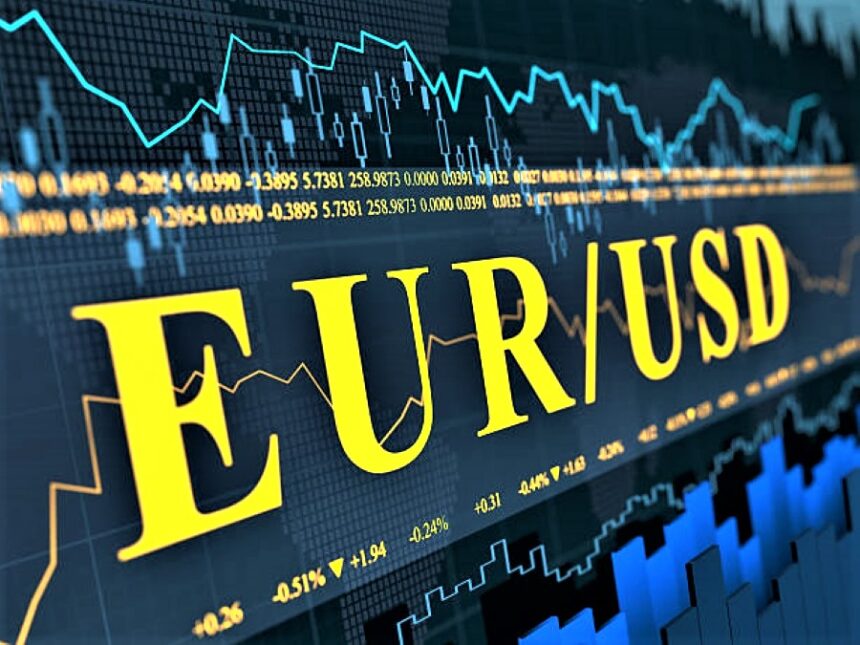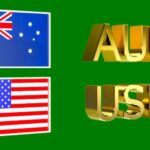The EURUSD pair is firmly on the back foot for a third consecutive session, pressured by rising US Dollar strength and renewed US-EU trade tensions. Market sentiment has soured after US President Donald Trump escalated trade threats, vowing to include the European Union in the next wave of punitive tariffs. Meanwhile, a robust US labor market is pushing the Federal Reserve’s interest rate cut expectations further into the future, adding fuel to the USD rally.
Trump’s Tariff Salvo Roils Markets, Targets the EU
Risk appetite has taken another blow after President Trump’s surprise TV interview, in which he announced a fresh round of tariffs affecting key US trading partners, with the European Union squarely in the crosshairs this time. According to Trump, blanket tariff rates will now be raise to 15% or even 20%, up from the current 10%, unless trade partners comply with stricter terms.
While previous rounds of tariffs largely targeted China and developing economies, including the EU in this latest salvo has rattled investor confidence and brought renewed focus to unresolved US-EU trade negotiations. Uncertainty over a deal before the August 1 deadline is keeping the Euro under pressure, even though European officials have expressed cautious optimism.
The announcement marks a shift in tone from the White House and suggests that transatlantic trade tensions could be reignited in the coming weeks. The prospect of retaliatory measures from Brussels further complicates the outlook for European exporters, adding another layer of risk to the Eurozone’s fragile economic recovery.
EURUSD Hits 1.1665: Bears Eye 1.1660 Key Support
At the time of writing, EURUSD is trading around 1.1680, having touched a session low of 1.1665 during early Asian hours. This marks a third straight day of declines, and the pair is on track to close the week nearly 0.8% lower, reflecting a correction from the July 1 high near 1.1785.
Technical traders are watching the 1.1660 level closely, as a clear break below it would open the door to 1.1620 and possibly 1.1585 – the latter being a strong support zone tested in mid-June. The pair remains locked in a short-term downtrend, with the 50-day moving average rolling over and momentum indicators tilting bearish.
US Jobless Claims Surprise with Strong Drop
A major contributor to the recent USD strength has been the unexpectedly strong US employment data. On Thursday, the Labor Department reported that initial jobless claims fell by 6,000 to 227,000, beating expectations for a rise to 235,000. This marked the lowest level in seven weeks, further cementing views of a resilient US labor market.
This positive surprise has significantly dampened hopes of a July rate cut by the Federal Reserve. The CME FedWatch Tool now prices in less than 5% odds of a rate cut in July, and the likelihood of a 25 basis point (bps) cut in September has dropped to 65%, down from 72% just a day ago.
This shift in market pricing has helped propel the US Dollar Index (DXY) back toward the 105.00 region, acting as a headwind for the EURUSD pair.
Fed Speakers Signal Division, but Overall Hawkish Tilt Remains
Thursday also brought a series of public appearances by key Federal Reserve policymakers. Fed Governor Christopher Waller argued that policy remains too restrictive, suggesting that tariff-driven inflation will be temporary and shouldn’t prevent the Fed from considering easing soon.
However, other Fed voices offered a more cautious view. St. Louis Fed President Alberto Musalem emphasized the uncertainty surrounding the impact of tariffs, noting that it’s too early to tell if the inflationary effect is transitory or persistent.
In contrast, San Francisco Fed President Mary Daly reiterated her belief that tariffs will only have a muted impact on prices, and she still expects two interest rate cuts before year-end.
While the Fed appears divided, the market response suggests growing confidence that any rate adjustments will be delayed, especially if inflation from tariffs proves manageable and the labor market remains solid.
ECB Officials Push Back on Further Rate Cuts
Across the Atlantic, the European Central Bank (ECB) is taking a more cautious tone. ECB policymaker Isabel Schnabel said on Friday that further rate cuts are not necessary unless inflation data deviates significantly from projections. She emphasized that growth risks are now balanced, suggesting a reluctance within the ECB to ease policy any further unless absolutely required.
This cautious stance reflects a desire to keep some policy ammunition in reserve, especially amid rising geopolitical and fiscal uncertainty. With Eurozone inflation beginning to stabilize and risks more symmetrical, Schnabel’s comments may cool speculation about more aggressive ECB action.
Eurozone Inflation: Mixed Signals From France and Germany
Recent inflation data out of the Eurozone provided a mixed bag. In France, June CPI rose by 0.4% month-over-month, while the year-on-year rate was revised up to 0.9% from 0.8%. This points to a slightly more robust inflation backdrop than initially thought.
However, in Germany, figures released by Destatis confirmed that inflation eased to the ECB’s 2.0% target on a year-on-year basis in June. On a monthly basis, inflation was flat, reinforcing the idea that pricing pressures remain well-contained in the region’s largest economy.
Taken together, these numbers support the ECB’s narrative of moderate and stable inflation, reducing the urgency for rate action but also underscoring the vulnerability of the recovery to external shocks such as trade tariffs or energy price spikes.
EURUSD Performance Against Majors: Broad-Based Weakness
The Euro’s weakness wasn’t confine to just the US Dollar. The EUR heatmap shows losses against most major peers. On the day, the Euro was down 0.22% against the USD, 0.22% against the JPY, and 0.10% against the NZD. The only gain came against the Japanese Yen, highlighting a generalized trend of underperformance.
Such broad-based softness suggests that traders are increasingly bearish on the single currency due to mounting trade risks, limited ECB policy flexibility, and ongoing economic fragility within the Eurozone.
Upcoming Catalysts: ECB Speeches, Trade Talks, US Budget Data
Looking ahead, Friday’s calendar remains relatively light, with only ECB speeches from Fabio Panetta and Piero Cipollone on tap, as well as German Current Account data. Neither event expected to drive major market volatility, but subtle shifts in ECB language could influence expectations for the September policy meeting.
In the US, the WASDE agricultural report and the monthly budget statement are also unlikely to sway markets unless they produce dramatic surprises. Instead, traders will remain focused on developments around US-EU trade negotiations, as any escalation could inject further downside pressure into the EURUSD pair.
Conclusion: EURUSD Struggles Amid Trade Fears and Strong USD
The EURUSD pair remains vulnerable as the dual headwinds of renewed tariff threats and a resilient US labor market continue to support the US Dollar. While ECB policymakers appear in no rush to ease further, this relative restraint is unlikely to reverse the EUR’s bearish trend unless supported by strong data or a breakthrough in US-EU trade talks.
With the pair hovering near key support at 1.1660, traders should remain alert to further downside risks. A break below this level could accelerate the correction toward 1.1620 or even 1.1585. On the upside, recovery attempts will likely meet resistance around 1.1720 and 1.1760, where selling pressure may reemerge.
Disclaimer: This blog is for informational purposes only and does not constitute financial advice. Always conduct your own research and consult a professional advisor before making investment decisions.
[sc_fs_multi_faq headline-0=”h2″ question-0=”What should traders watch next for EUR/USD?” answer-0=”Key events include ECB speeches, progress on US-EU trade talks, and upcoming US inflation and consumer data that could reshape rate expectations.” image-0=”” headline-1=”h2″ question-1=”Could strong US job data delay Fed rate cuts?” answer-1=”Yes. Lower-than-expected jobless claims suggest a robust labor market, reducing the urgency for the Fed to cut rates in the near term.” image-1=”” headline-2=”h2″ question-2=”Why is the Euro falling against the US Dollar?” answer-2=”The Euro is weakening due to President Trump’s announcement of new tariffs targeting the EU, combined with strong US jobless claims data, which has dampened expectations of near-term Fed rate cuts.” image-2=”” count=”3″ html=”true” css_class=””]









